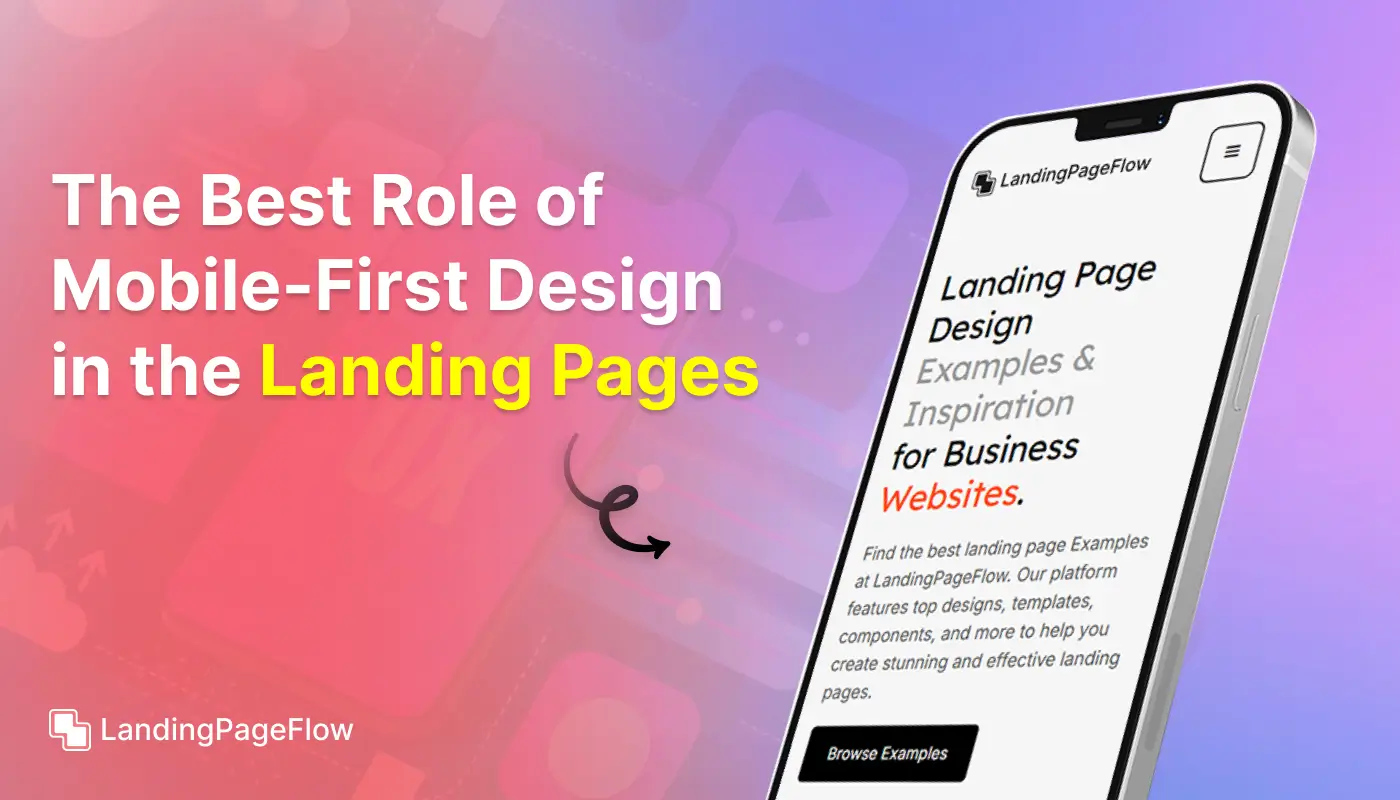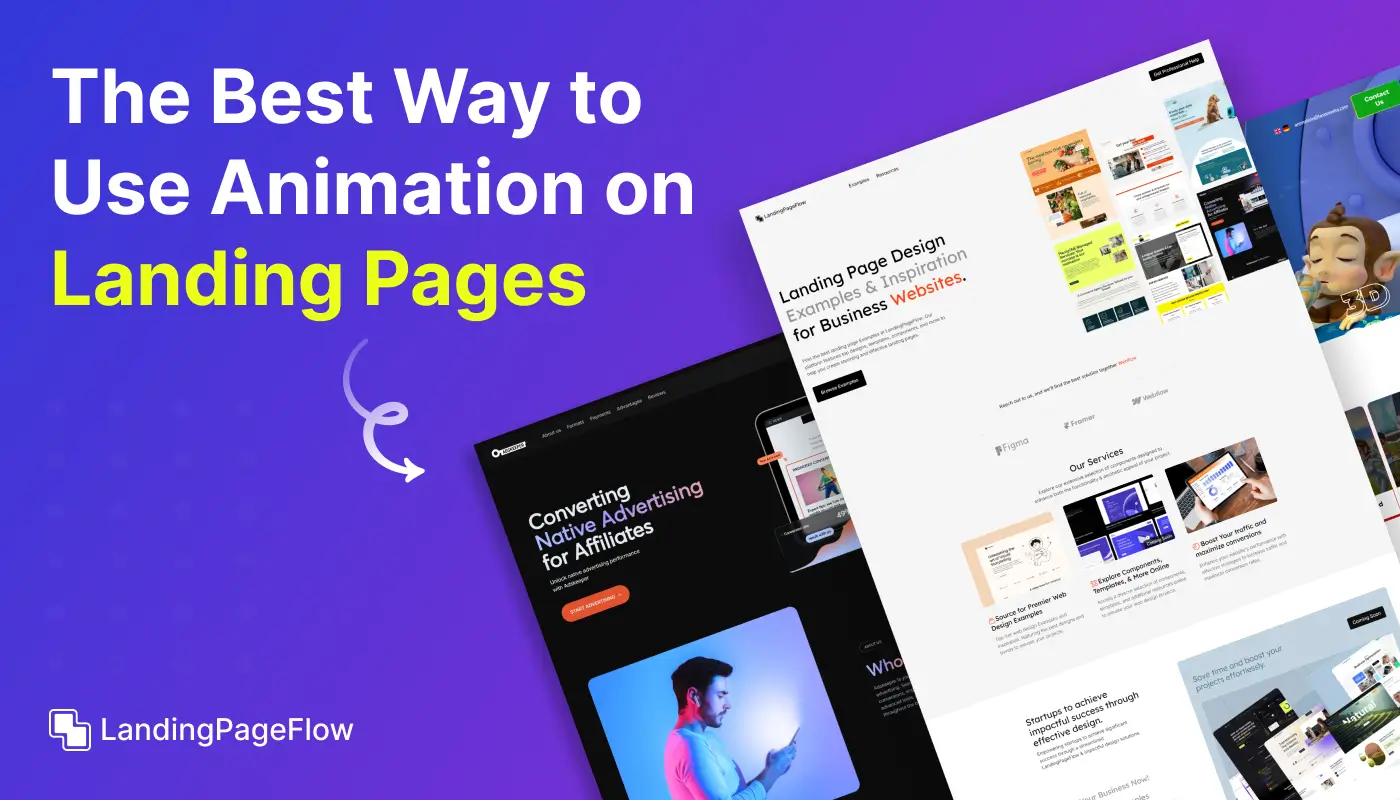Essential Tips For Designing An Effective Web Landing Page

November 17, 2025
Creating a powerful web landing page starts with understanding your audience’s needs and delivering a message they can’t ignore.
In 2025, web design tools make it easier than ever to produce polished pages with responsive layouts, fast load times, and engaging visuals.
This guide covers the essential strategies that help you plan, design, and launch landing pages that convert visitors into leads or customers.
From strategic use of headlines to well-placed CTAs, every element plays a role in capturing attention and guiding action.
You’ll also learn how to use whitespace effectively, maintain brand consistency, and structure sections for maximum clarity.
With the right design choices, your landing page can do more than just look good, and it can become a growth engine for your business.
"Need expert advice to optimize your landing page design?
Book a free quick session & get a personalized improvement plan."
Table of Contents
- Understand Your Landing Page Goals
- Key Elements of an Effective Landing Page
- Clear and Compelling Headline
- Engaging Visuals and Design
- Persuasive Copy
- Strong Call-to-Action (CTA)
- Trust Signals and Social Proof
- Lead Capture Forms
- Best Practices for Landing Page Optimization
- A/B Testing
- Mobile Responsiveness
- Page Speed Optimization
- Personalization and Targeting
- Analytics and Tracking
- Common Mistakes to Avoid
1. Understand Your Landing Page Goals

- Define Your Objective: Before diving into design, it’s essential to define the primary goal of your landing page. Are you aiming to generate leads, promote a special offer, or drive sales? Your design should reflect this objective and guide visitors toward completing the desired action.
- Know Your Audience: Understanding your target audience is crucial. Identify their needs, preferences, and pain points to tailor your landing page content and design to resonate with them. This personalized approach increases the likelihood of conversion.
2. Key Elements of an Effective Landing Page

Clear and Compelling Headline
- Importance: The headline is the first thing visitors see and sets the tone for the rest of the page. It should be clear, concise, and compelling, immediately communicating the value of your offer.
- Tips:
- Use strong, action-oriented language.
- Ensure the headline is aligned with the visitor’s expectations based on the source that brought them to the page (e.g., ads, emails).
Engaging Visuals and Design
- Importance: Visual elements help capture attention and guide visitors through the page. Effective design can make your page more appealing and easier to navigate.
- Tips:
- Use high-quality images or videos that are relevant to your offer and resonate with your audience.
- Maintain a clean and organized layout to prevent distractions and focus visitors’ attention on key elements.
Persuasive Copy
- Importance: The text on your landing page should clearly articulate the benefits of your offer and address potential objections.
- Tips:
- Write in a conversational tone that speaks directly to the reader.
- Highlight the unique selling points and benefits of your offer.
- Use bullet points or short paragraphs to make the content easily scannable.
Strong Call-to-Action (CTA)
- Importance: The CTA is a critical element that directs visitors to take the desired action, such as signing up for a newsletter or making a purchase.
- Tips:
- Make the CTA button stand out with contrasting colors and compelling text.
- Use action-oriented language that clearly tells visitors what to do (e.g., “Get Started,” “Download Now”).
Trust Signals and Social Proof
- Importance: Trust signals and social proof build credibility and reassure visitors about the value and reliability of your offer.
- Tips:
- Include testimonials, reviews, or case studies from satisfied customers.
- Display recognizable trust badges or security seals, especially if collecting sensitive information.
Lead Capture Forms
- Importance: Lead capture forms are essential for gathering visitor information, such as email addresses, to follow up and nurture potential leads.
- Tips:
- Keep forms short and only request essential information to reduce friction.
- Use clear and inviting language for form fields and submission buttons.
3. Best Practices For Landing Page Optimization

A/B Testing
- Importance: A/B testing involves comparing two versions of a landing page to determine which performs better. It helps optimize elements for better conversion rates.
- Tips:
- Test different headlines, CTAs, images, and other elements.
- Use the results to make data-driven decisions and improve your landing page.
Mobile Responsiveness
- Importance: With a significant portion of web traffic coming from mobile devices, ensuring your landing page is mobile-friendly is crucial for reaching all users.
- Tips:
- Use responsive design techniques to ensure your page looks and functions well on all screen sizes.
- Test the mobile version of your landing page to check for usability issues.
Page Speed Optimization
- Importance: Page load times can affect user experience and conversion rates. A slow-loading page can lead to higher bounce rates and lost opportunities.
- Tips:
- Optimize images and other media to reduce file sizes.
- Minimize code and leverage caching to improve page speed.
Personalization and Targeting
- Importance: Personalizing your landing page based on visitor data can enhance relevance and engagement, leading to higher conversion rates.
- Tips:
- Use dynamic content to tailor the page based on user demographics, behavior, or referral sources.
- Implement retargeting strategies to bring back visitors who didn’t convert on their first visit.
Analytics and Tracking
- Importance: Analytics and tracking tools provide insights into how your landing page is performing and where improvements can be made.
- Tips:
- Use tools like Google Analytics to track key metrics such as conversion rate, bounce rate, and user behavior.
- Set up goals and conversion tracking to measure the effectiveness of your landing page.
4. Common Mistakes to Avoid

- Overloading with Information: Avoid cluttering your landing page with too much information. Focus on the key benefits and call to action to keep visitors engaged.
- Weak or Confusing CTAs: Ensure your CTA is clear and compelling. A vague or poorly placed CTA can result in missed opportunities.
- Ignoring Mobile Users: Failing to optimize for mobile devices can lead to a poor user experience and lost conversions.
- Lack of Testing: Not testing different elements can result in missed opportunities for optimization. Regular A/B testing is essential for continual improvement.
Conclusion
Building an effective landing page is about aligning design, content, and user intent into a single, seamless experience.
These tips help you focus on clarity, reduce friction, and create layouts that naturally lead visitors toward a desired action.
Fast loading speeds, responsive design, and intuitive navigation are no longer optional, and they’re expected by modern users.
By applying the techniques shared here, you can design pages that feel effortless to use while driving measurable results.
Start implementing these strategies today and watch your landing page’s impact grow with each visitor who arrives.

FAQ
1. What’s the most important section on a landing page?
Your headline and above-the-fold area, and it’s where visitors decide to stay or leave.
2. How many CTAs should a landing page have?
One primary CTA is ideal, though secondary options can work if clearly separated.
3. What colors work best for landing pages?
High-contrast palettes that align with your brand and highlight key elements.
4. How can I make my landing page mobile-friendly?
Use responsive frameworks, test on multiple devices, and optimize for touch interactions.
5. Should I include testimonials or reviews?
Yes, social proof builds trust and can significantly boost conversion rates.
6. How often should I update my landing page?
Regularly review and refresh every few months or when launching a new offer.



















